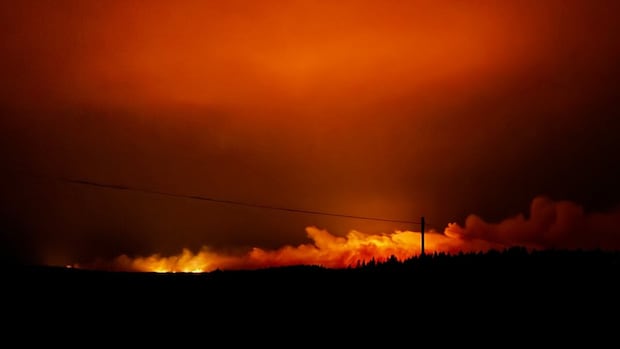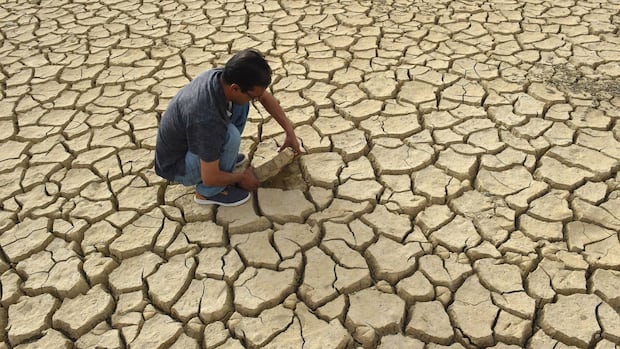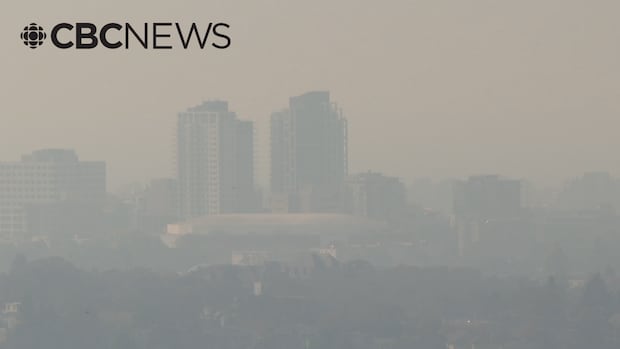[
There was a remarkably salient moment at a recent journalism conference in Seoul where participants from 50 countries debated climate change and its effect on both the literal and political landscape of the world.
The consensus, albeit a rough one, was that the public — from Azerbaijan to Zaire — was exhausted by the issue. It was tough to get their attention and people increasingly tuned out, even though in some cases their homes had literally been blown away.
As the matter was debated, the hills outside of the Journalists Association of Korea hall last spring were being ravaged by wildfires — only weeks after the ground had been clawed back from winter.
This week, from Western Canada to Newfoundland, thousands of people were forced to flee their homes and communities in the face of intense wildfires. While it was an organized exodus, it’s not much of a stretch to suggest the evacuees, bundled into their cars and buses with their belongings, resembled civilians fleeing an advancing enemy force.
Those people are also exhausted, but in a different way.
When we talk about climate it usually falls into a few select bins — science, policy, protests and politics.
Canada is already experiencing the effects of climate change. But global climate issues can affect Canadians, too. Geography professor and TikToker Robert McLeman joins About That with Andrew Chang to explain.
Rarely is it spoken about in terms of its effects on the national security of nations — something that was evident when you listened to journalists from all over the world describe what was going on in their individual countries (I was one of those journalists in attendance).
Climate as a national security threat is hardly top of mind.
Yet, here we are.
Buried deep within a recent wildfire briefing, there was a particularly stark admission from a senior federal official who suggested the ability of the government to respond is close to the breaking point.
“What we’re seeing today with these disaster-driven events, they’re increasingly outpacing the capacity of the Canadian emergency management system,” said Matt Godsoe, the director of the Emergency Management Strategy Implementation Office.
“A key example is the increasing reliance on the Canadian Armed Forces for disaster response and support. Which long term is unsustainable, and it can hinder the Canadian forces’ ability to respond to other threats, both at home and abroad.”
It’s not like the warnings haven’t been there for years.
The U.S. National Security and Intelligence Assessment, in 2008, noted that climate change “will have wide-ranging implications” for national security, whether it’s the opening of Arctic sealanes, the ravages of unpredictable weather or the forced migration of whole populations.
Ten years ago, in the waning days of the Obama administration, the White House produced another more pointed warning in its national security strategy.
“Climate change is an urgent and growing threat to our national security, contributing to increased natural disasters, refugee flows and conflicts over basic resources like food and water,” said the 2015 review.
“The present day effects of climate change are being felt from the Arctic to the Midwest. Increased sea levels and storm surges threaten coastal regions, infrastructure and property.”
Sound familiar?
Many governments, including Canada, have delivered similar warnings. But as participants in that journalism conference last spring noted, the prophesies appear to have fallen on deaf ears.

Part of the problem is that many in the political, environmental and defence communities don’t consider the impact of climate change to be purely a national security issue.
Extreme weather or natural disasters are not bombs, missiles or malware. It’s tough to defend against, even though, for example, the effect of wildfires laying waste to entire towns is the same manner as someone dropping explosives.
Perhaps more menacingly, climate change is becoming a driver of geopolitics. Would anyone be talking about annexing Greenland if the retreating ice sheets didn’t present the tantalizing prospect of resource extraction?
In this country, for several years natural disasters have prompted a military response. However, as the argument goes, while the military is helping with evacuations or clearing hurricane-downed trees it is not training for its regular day job.
A House of Commons committee, a couple of years ago, took a stab at trying to define whether soldiers should be wielding chainsaws as often as rifles. If anything, it was instructive in illustrating that in Canada we still have trouble defining what role the military plays in our society.
If anyone was hoping for some wholesale reorganization, something that would ease the burdens on ravaged communities — or exhausted troops — they came away from the parliamentary exercise disappointed.
The effort, it seems, has been put into the intangible.
At the 2021 NATO summit, Canada offered and has subsequently established the NATO Climate Change and Security Centre of Excellence in Montreal.
It is, however, focused on the long term such as finding ways to reduce the impact of military activities on climate. Big, heavy pieces of military equipment produce a lot of carbon. So do battles.
One of the biggest aspects of the centre’s research is mitigating the effect of climate change on military institutions.
As the centre noted: “Climate change tests the resilience of military installations and infrastructure, with strategic sites being vulnerable to rising sea levels, melting permafrost and extreme weather events.”
There have been signs, however, that some interesting and innovative ideas about how the federal government could reorganize itself to better mitigate disasters and deliver relief more swiftly are gaining traction.
It’s been a hazy few weeks for parts of western and central Canada, as smoke from wildfires burning in Saskatchewan and Manitoba has carried across North America. While the immediate danger of the blazes is often clear, it’s not always obvious how wildfire smoke affects human health. Medical columnist Dr. Melissa Lem spoke to CBC about measures to take to breathe easy this wildfire season.
Eleanor Olszewski, the Minister of Emergency Management and Community Resilience, recently said the federal government is considering the formation of an agency to better co-ordinate the federal response — an organization that could have a strategic reserve of waterbombers and perhaps even a mechanism to deploy a humanitarian task force.
“We think that the formation of such an agency could have a very positive impact on our ability to co-ordinate how we respond to national disasters across the country,” Olszewski said. “We’re working out what the details of that might look like.”
Given the overlap of jurisdictions with provincial governments, which are responsible for crisis response and management, careful reflection is a probably good idea. But hopefully no one in the federal bureaucracy tries to re-invent the wheel.
A number of other countries, notably Germany, have robust civil defence structures and systems in place.
Eva Cohen, of Civil Protection Youth Canada, has been arguing for years for the establishment of a volunteer-based civil protection agency in Canada to complement the country’s emergency management system.
Cohen has testified before the Commons defence committee. However, until recently, her ideas seem to have fallen on deaf ears.
The bottom line: the federal government already has a good idea what such a civil protection agency should, and could, look like.
Cohen, in an interview with CBC News, suggested a key element of the federal government’s mindset should involve not just disaster response, but anticipation.
“To me, resilience is more than bouncing back,” Cohen said. “It is really about avoiding getting hit in the first place and being able to stay in control when things go wrong.”
That, however, would involve heeding warnings and redefining the lens through which we look at climate-driven disasters.
In a step beyond earlier red-flag reports, the Council on Foreign Relations last fall declared in exceptional detail how climate change is increasingly a driver in conflict.
In other words, weather bombs could be swapped for real bombs in certain places.
“Within individual countries, climate change increases the likelihood that civil war could break out,” said the report.
“Research has found that a rise in average temperatures by 1.8°F is linked to a 4.5 per cent increase in the incidence of civil war that year. Climate is also linked to making such wars last longer.”


